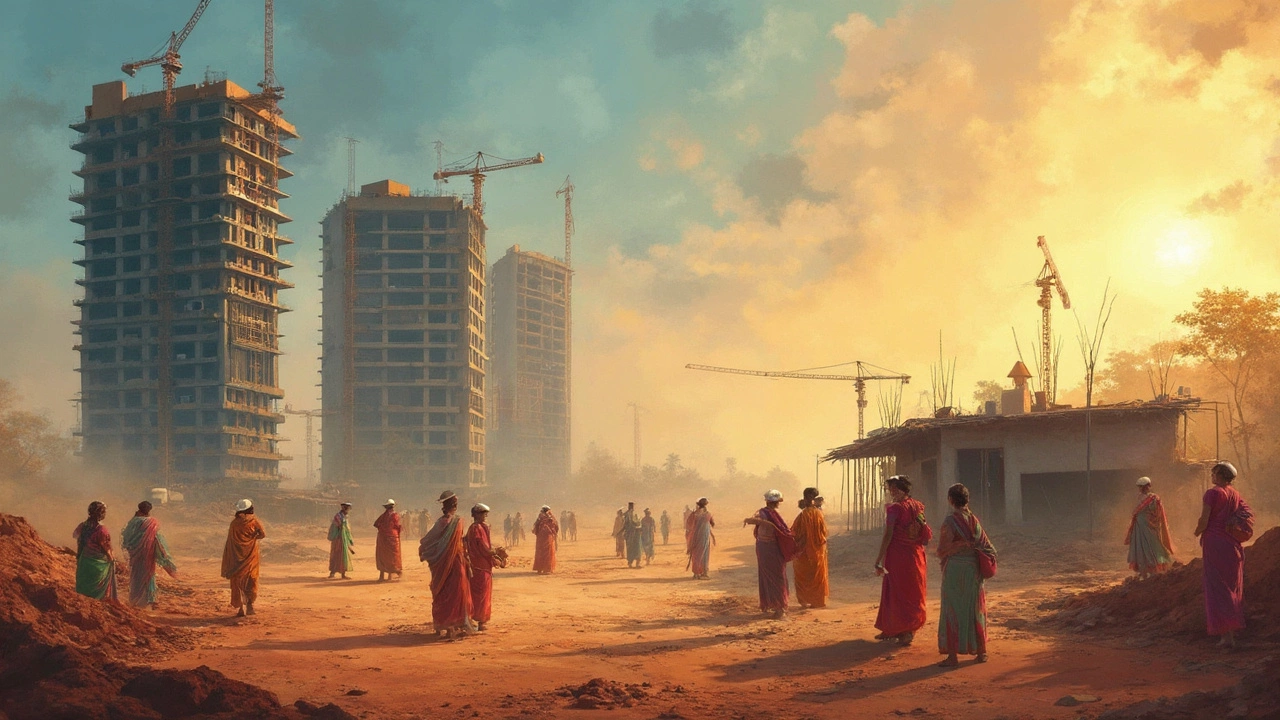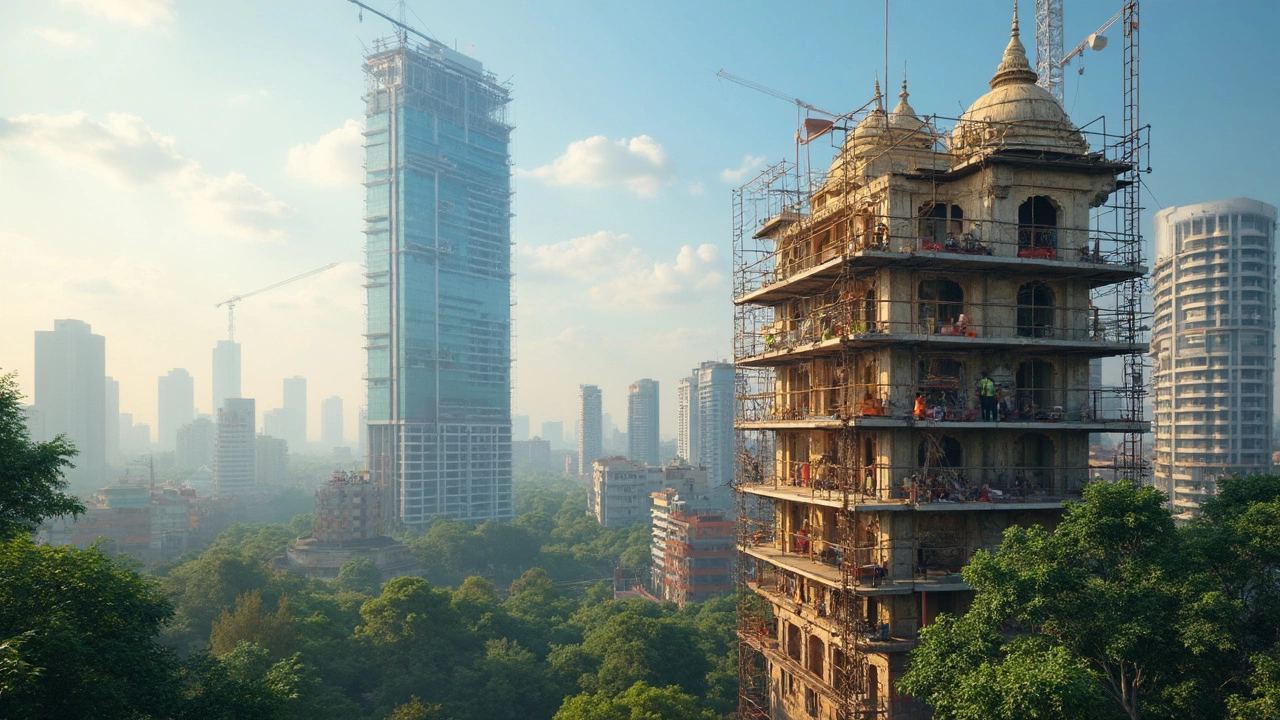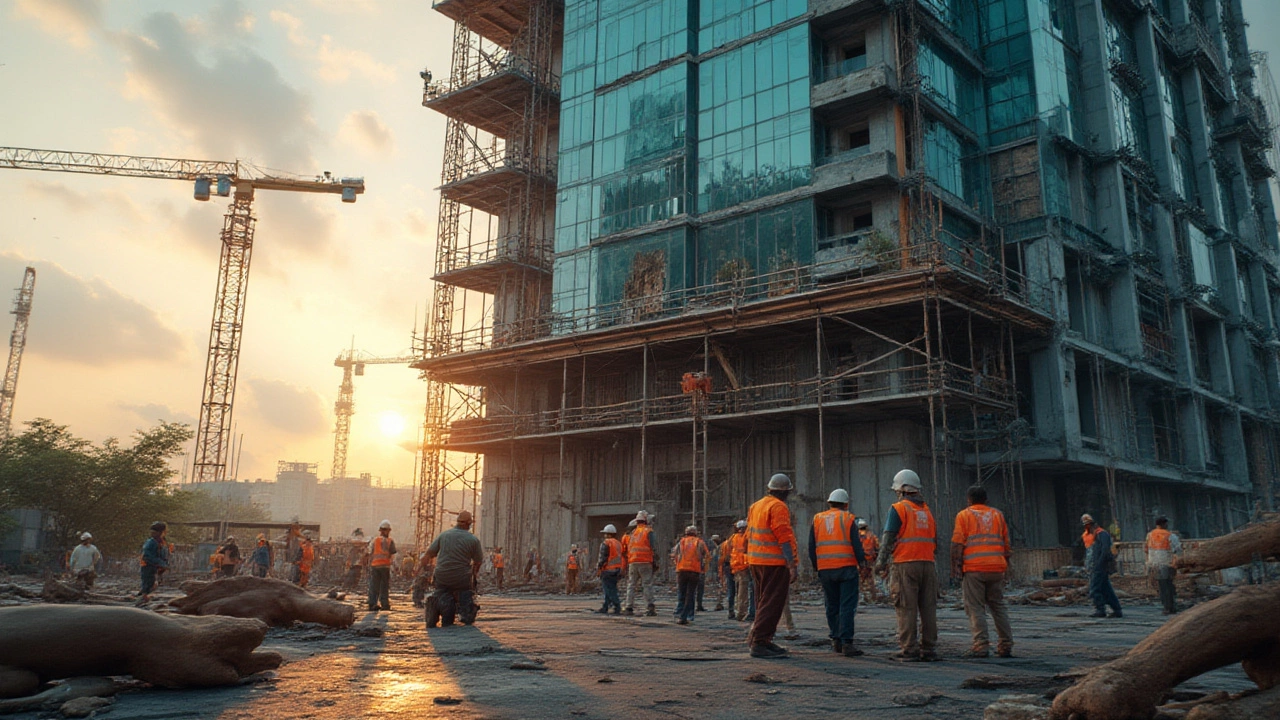Ever wonder why some buildings are called commercial and others non-commercial? It's all about their purpose and scope. Generally, commercial construction is any building project designed for business or profit-making activities. Think of your local malls, factories, or towering office spaces. Conversely, non-commercial construction usually refers to projects that serve a community or private need without profit being the main goal. Schools, hospitals, and homes fall into this camp.
But wait, you ask, why does this matter? Well, if you're diving into the world of construction, knowing these differences can save you time, money, and confusion. For businesses, commercial construction involves navigating through specific zoning laws, acquiring permits, and often dealing with complex contracts. These projects are usually larger and come with a hefty price tag. On the flip side, non-commercial projects typically focus on fulfilling a necessary service or function, often with a tighter budget.
Intrigued about zoning regulations? They're the rules that dictate what can be built where. Commercial projects often face stricter zoning laws as they impact traffic, noise, and the local economy. Meanwhile, non-commercial structures typically abide by residential zoning laws, which can be slightly more lenient.
- Defining Commercial and Non-Commercial Construction
- Purpose and Scale
- Zoning and Regulations
- Design and Functionality
- Financial Considerations
Defining Commercial and Non-Commercial Construction
Alright, let's break down what exactly we mean by commercial and non-commercial construction. At its heart, it boils down to the building's intent and where the money comes into play.
Commercial Construction Explained
When we talk about commercial construction, we're talking about projects that have a direct business purpose. These are your retail stores, office complexes, hotels, and even schools if they're profit-driven. The key here is these structures are meant to generate income. Consequently, they often require significant investment, precision, and professional oversight to meet stringent standards. Plus, they usually involve more complicated logistics due to larger scale operations.
What About Non-Commercial?
On the flip side, non-commercial construction tends to be about serving a community, individual, or non-profit need. This is your typical residential home, a public school funded by the state, or even a local community center. These projects aren't about raking in profits but rather fulfilling a crucial need. They might not be as flashy as commercial projects but are essential in their own right.
Here's a straightforward way to differentiate: if the end-goal is business earnings, it's commercial. If it's more about support or service without profit, it leans towards non-commercial.
Key Differences
- Scale and Size: Generally, commercial projects are bigger and more complex than non-commercial ones.
- Budget: Budgets for commercial construction tend to be higher because of the investment returns expected.
- Regulation: Commercial buildings follow stricter codes and zoning requirements.
Grasping these basics can help when handling projects or just chatting with a contractor. Understanding the landscape isn't just jargon—it can have real world implications on timelines, costs, and expectations.
Purpose and Scale
When you think about commercial construction, it's all about serving a business goal. The purpose here is to create spaces that can directly or indirectly generate income. That's why you see grand shopping centers, sprawling hospitals, and sleek corporate offices under this umbrella. These projects are typically larger than life and require significant investment and coordination. They're designed to handle foot traffic, meet regulatory standards, and provide long-term economic benefits.
Commercial Construction
Let’s put numbers into perspective. A small coffee shop counts as a commercial project, but so does a hundred-story skyscraper lining a bustling downtown. Essentially, the scale varies based on the ambition and purpose of the business. Did you know that the Willis Tower in Chicago took just over three years to complete and involved 2,000 workers? That's the type of scale we're talking about. Such projects demand detailed planning, hefty budgets, and strict timelines.
Non-Commercial Construction
Switching gears to non-commercial construction, the purpose shifts to serving community or private needs rather than profit. Think schools, libraries, and homes. These projects are usually smaller and cater to defined populations. They focus more on function and necessity than revenue generation. While they still require permits and planning, the projects are often less complex when compared to their commercial counterparts.
Consider building a community park. It's non-commercial but requires planning concerning community needs, environmental impact, and compliance with local regulations. Yet, it doesn’t revolve around economic returns, just quality of life.
Size and Scope
Whether commercial or non-commercial, understanding the scope and scale can drastically influence decisions. Taking on a project with the right knowledge of its purpose helps align expectations and resources efficiently. Remember, bigger isn't always better; it's about fitting the project scale to its goals.
| Project Type | Average Completion Time | Typical Budget |
|---|---|---|
| Commercial Skyscraper | 3-5 years | $100M+ |
| Non-Commercial Library | 1-2 years | $5M |

Zoning and Regulations
When it comes to commercial construction, understanding zoning laws can save you from major headaches down the road. Zoning rules determine what can be built and where, often based on an area's designated use—be it residential, commercial, or industrial. These regulations ensure that different land uses don't negatively impact each other.
Commercial Zoning
For commercial projects, zoning laws usually focus on how a business will impact the surrounding area. Issues like traffic flow, noise levels, and even aesthetics come into play. If you're planning a building in a bustling city center, expect tighter restrictions compared to a suburban area. Some cities have mixed-use zones, allowing a combination of residential and commercial uses, which can offer more flexibility for developers.
Permits are another big deal in commercial construction. From starting the groundwork to finishing touches, most stages require a green light from local authorities. The process isn't just about getting approvals; it's also about sticking to building codes that ensure safety and structural integrity.
Non-Commercial Zoning
On the other hand, non-commercial projects like schools and homes usually deal with residential zoning laws. These might be less strict, but they still come with rules like maximum heights, set-back requirements, and open space provisions.
Key Considerations
- Identify the zoning type of your plot before commencing any project. This sets the stage for everything else.
- Consult local government offices or planning boards to understand specific requirements.
- Consider hiring a zoning attorney or consultant, especially for large projects, to navigate complex laws.
For instance, in some areas, commercial sites need to have a certain number of parking spaces based on their square footage or expected foot traffic. This can significantly affect planning and costs.
Checking zoning regulations early in the planning stage can be a lifesaver. Going against these laws can lead to fines, project delays, or even an order to tear down non-compliant construction. So, getting this right is crucial for seamless project execution.
Design and Functionality
When it comes to commercial construction, the design and functionality are primarily driven by the business needs and customer experience. An office building is more than just four walls and a roof—it's a space that needs to impress clients and provide employees with an inspiring work environment. That's why you'll often see open-plan designs, sleek conference rooms, and the latest tech installations. Malls and retail spaces prioritize maximizing foot traffic and ensuring each store gets enough attention.
On the other hand, non-commercial construction like schools or hospitals focuses on serving lots of people while being safe and easy to navigate. Schools may include wide hallways and lots of natural light to create a conducive learning environment. Hospitals are designed with efficiency in mind, ensuring that patients can be moved from rooms to operating theaters swiftly.
Functionality in any construction is key. As noted by renowned architect Peter Zumthor,
“Every building is built for a specific purpose. If it fails to meet that purpose, no amount of aesthetic beauty can compensate.”This highlights the importance of tailoring each project to its primary function while maintaining a pleasing design.
Materials and Aesthetic Choices
The materials used in commercial structures often lean towards durability and modern aesthetics—steel, glass, and concrete are favorites for their low maintenance and high performance. Meanwhile, non-commercial projects may embrace more traditional materials like wood or brick, aiming for warmth and comfort.
Interior Design Considerations
In commercial spaces, interior design plays a vital role. Flexible seating arrangements or modular furniture can adapt to growing teams or changing client needs. For non-commercial buildings, like a community center, the goal is to make spaces multi-functional. A single hall might function as a dance studio today and a meeting room tomorrow.
Understanding these design variations helps inform better decisions whether you're still in the blueprint phase or managing the final touches on a construction site. Good design marries form and function effectively, ensuring both practical and aesthetic goals are met.

Financial Considerations
When you're deciding between commercial and non-commercial construction, the financials play a huge part. For commercial projects, we're talking big budgets. These projects often require substantial initial investments because of their size and complexity, but they can also offer hefty returns if successful. The financing options usually include bank loans, investors, or business profits. Given their scale, commercial buildings might also benefit from depreciation for tax advantages.
On the flip side, non-commercial construction tends to be more budget-friendly. These projects usually operate on tighter financial constraints and might rely on community funding, government grants, or donations. Since they're not profit-driven, cost management becomes crucial to avoid overspending.
Budgeting Differences
Budget management varies significantly between the two. For commercial projects, you'll find detailed financial plans, often including contingencies for unexpected expenses. Bids from contractors are typically higher due to the project's inherent demands. Meanwhile, non-commercial projects often emphasize resource allocation efficiency, striving to make the most out of limited funds.
Operational Costs
Beyond the initial building costs, operational expenses need consideration. Commercial buildings usually have higher maintenance costs due to their size and usage intensity. Then there's energy consumption – bigger buildings, more power, right? Conversely, non-commercial spaces like schools and homes aim for efficiency, often choosing sustainable materials and energy-efficient systems to cut down long-term expenses.
| Aspect | Commercial | Non-Commercial |
|---|---|---|
| Average Budget | $500K - $10M+ | $50K - $500K |
| Return Expectation | High | Not applicable |
| Operational Cost | High | Medium |
So, are you eyeing a commercial project hoping for future profits or embarking on a community-driven non-commercial build? Each path has its financial challenges, but understanding these can help in making smarter, informed decisions on budget allocations.




